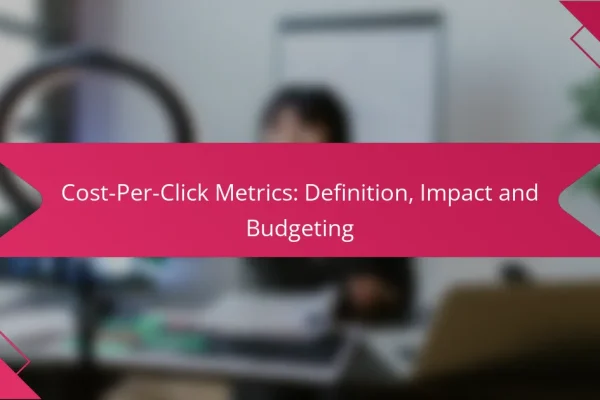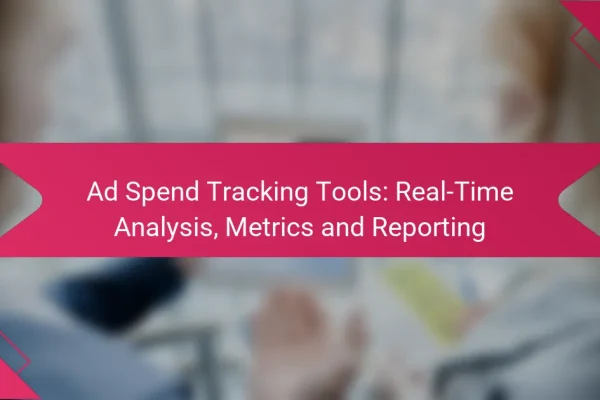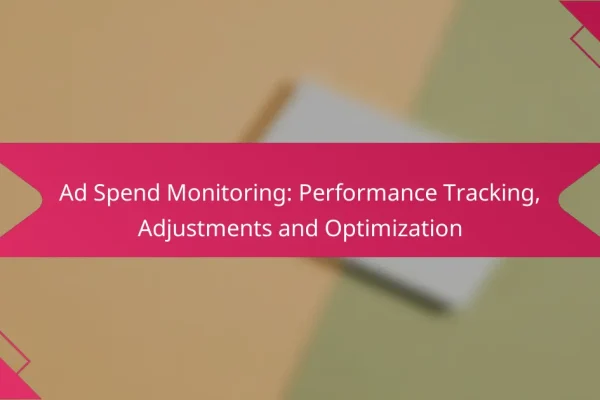How to budget for social media ads in the USA?
Budgeting for social media ads in the USA involves setting clear financial limits while aligning with your advertising goals. A well-structured budget helps maximize your return on investment and ensures that your ad campaigns are both effective and sustainable.
Define advertising goals
Clearly defining your advertising goals is essential for effective budgeting. Consider what you want to achieve, such as increasing brand awareness, generating leads, or driving sales. Each goal may require a different budget allocation based on its complexity and expected return.
For instance, a campaign focused on brand awareness might require a broader reach and thus a higher budget, while a targeted lead generation campaign could be more cost-effective with a narrower focus.
Analyze target audience
Understanding your target audience is crucial for effective ad budgeting. Analyze demographics, interests, and online behaviors to tailor your campaigns. This insight allows you to allocate funds more efficiently, targeting the right people with the right message.
For example, if your audience is primarily young adults, platforms like Instagram or TikTok may require a larger budget due to higher competition, while LinkedIn might be more cost-effective for a B2B audience.
Determine ad spend limits
Setting ad spend limits involves deciding how much you can afford to invest in social media advertising. Consider your overall marketing budget and allocate a specific percentage for social media ads, typically ranging from 5% to 20% of your total marketing budget.
Establish daily or monthly spending caps to avoid overspending. For instance, if your monthly budget is $1,000, you might set a daily limit of around $33 to keep your spending consistent throughout the month.
Use budgeting tools
Utilizing budgeting tools can streamline your ad management process. Platforms like Facebook Ads Manager or Google Ads provide built-in budgeting features that help track spending and performance in real-time.
Consider using spreadsheets or dedicated budgeting software to monitor expenses and adjust allocations based on campaign performance. This approach allows for greater flexibility and control over your ad budget.
Monitor and adjust budget
Regularly monitoring your ad performance is key to effective budget management. Analyze metrics such as click-through rates, conversion rates, and overall ROI to determine if your spending aligns with your goals.
Be prepared to adjust your budget based on performance. If a campaign is underperforming, consider reallocating funds to more successful ads or testing new strategies. This ongoing adjustment process helps optimize your advertising spend for better results.
What are the average costs of social media ads?
The average costs of social media ads can vary significantly based on the platform, targeting options, and campaign objectives. Generally, businesses can expect to spend anywhere from a few cents to several dollars per click or impression, depending on their strategy and audience reach.
Facebook ad costs
Facebook ad costs typically range from $0.50 to $2.00 per click, with variations based on factors like audience targeting and ad placement. Advertisers can also choose to pay per impression, with average costs around $5.00 to $10.00 per 1,000 impressions.
To optimize spending, focus on specific demographics and interests to improve ad relevance. Regularly monitor performance metrics to adjust bids and budgets accordingly.
Instagram ad costs
Instagram ads generally mirror Facebook’s pricing, with costs ranging from $0.70 to $3.00 per click. The visual nature of Instagram often leads to higher engagement, which can justify the investment for brands targeting younger audiences.
Utilizing eye-catching visuals and clear calls to action can enhance ad performance. Consider using Instagram Stories for more engaging formats, which may have different pricing structures.
Twitter ad costs
On Twitter, ad costs can vary widely, typically falling between $0.50 and $3.00 per engagement. Advertisers can choose from various objectives, such as website clicks or app installs, which can influence the overall cost.
To maximize effectiveness, utilize Twitter’s targeting options to reach specific user segments. Regularly analyze engagement rates to refine your strategy and budget allocation.
LinkedIn ad costs
LinkedIn ads tend to be more expensive, with costs ranging from $2.00 to $7.00 per click. This higher price reflects the platform’s professional audience, making it ideal for B2B marketing.
To make the most of your budget, focus on precise targeting, such as job titles or industries. Sponsored content and InMail can be effective formats for reaching decision-makers.
Snapchat ad costs
Snapchat ads typically cost between $0.10 and $0.30 per swipe, with additional options for video ads that may have different pricing structures. The platform is known for its younger demographic, making it suitable for brands targeting Gen Z and millennials.
Engaging and creative content is crucial on Snapchat to capture attention quickly. Experiment with different ad formats, such as Stories or filters, to find the most effective approach for your audience.
How to optimize social media ad spending?
To optimize social media ad spending, focus on refining your target audience, testing different ad variations, and analyzing performance metrics. Implementing these strategies can significantly enhance the effectiveness of your campaigns while controlling costs.
Target audience refinement
Refining your target audience is crucial for maximizing ad spend efficiency. Use demographic data, interests, and behaviors to create specific audience segments that align with your product or service. This targeted approach helps ensure your ads reach individuals most likely to convert.
Consider using tools like Facebook’s Audience Insights or LinkedIn’s targeting options to gather data on your audience. Regularly review and adjust your audience parameters based on campaign performance to improve engagement and reduce wasted spend.
A/B testing strategies
A/B testing allows you to compare different ad variations to determine which performs better. Create two or more versions of an ad with slight differences, such as headlines or images, and run them simultaneously to see which yields higher engagement or conversion rates.
Make sure to test one variable at a time for clear results. Allocate a reasonable budget for each variant, and analyze the outcomes to inform future ad designs, ultimately leading to more effective spending.
Ad placement optimization
Choosing the right ad placements can significantly impact your spending efficiency. Platforms like Facebook and Instagram offer various placement options, including feeds, stories, and in-stream videos. Analyze where your target audience is most active and adjust placements accordingly.
Consider using automatic placements initially to allow the platform’s algorithms to optimize for the best-performing spots. Monitor performance metrics closely to make informed adjustments as needed.
Utilize analytics tools
Analytics tools are essential for tracking ad performance and optimizing spending. Use platforms like Google Analytics, Facebook Ads Manager, or other specialized tools to gather insights on click-through rates, conversions, and return on ad spend.
Regularly review these metrics to identify trends and areas for improvement. Set specific KPIs to measure success and adjust your strategies based on data-driven insights to enhance overall campaign effectiveness.
Adjust bidding strategies
Adjusting your bidding strategies can help control costs while maximizing ad visibility. Consider using cost-per-click (CPC) or cost-per-impression (CPM) bidding based on your campaign goals. CPC is often more effective for driving traffic, while CPM can be beneficial for brand awareness.
Experiment with automated bidding options that adjust based on performance metrics. Monitor your budget closely and be prepared to make changes if certain strategies do not yield the desired results.
What factors influence social media ad costs?
Social media ad costs are influenced by several factors, including the platform, target audience, ad format, and bidding strategy. Understanding these elements can help businesses optimize their advertising budgets and achieve better results.
Platform Selection
Different social media platforms have varying cost structures. For instance, advertising on Facebook may be more affordable than on LinkedIn, where the audience is often more professional and targeted. Businesses should analyze their target demographics and choose platforms that align with their marketing goals.
Additionally, platforms like Instagram and TikTok may charge based on engagement metrics, while others may focus on impressions. Knowing the platform’s pricing model helps in budgeting effectively.
Target Audience
The specificity of your target audience significantly impacts ad costs. Narrowing down to a specific demographic, such as age, location, or interests, can lead to higher costs due to increased competition for that audience. Conversely, broader targeting may reduce costs but could dilute the effectiveness of the campaign.
Consider using audience insights tools provided by platforms to identify the most cost-effective segments. This approach can help in balancing reach and budget.
Ad Format
The format of your ad, whether it’s a video, carousel, or static image, can influence costs. Video ads typically have higher production costs but may yield better engagement rates. On the other hand, simpler formats like image ads can be more budget-friendly.
Evaluate the performance of different ad formats in your previous campaigns to determine which ones provide the best return on investment. Testing various formats can lead to more informed budgeting decisions.
Bidding Strategy
Your bidding strategy plays a crucial role in determining how much you spend on ads. Options include cost-per-click (CPC), cost-per-impression (CPM), and cost-per-action (CPA). Each strategy has its advantages and should align with your campaign goals.
For example, if your goal is to drive traffic to your website, a CPC model may be more effective. Regularly review and adjust your bidding strategy based on performance data to optimize costs.












